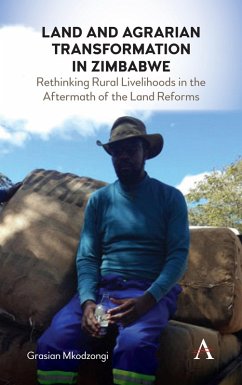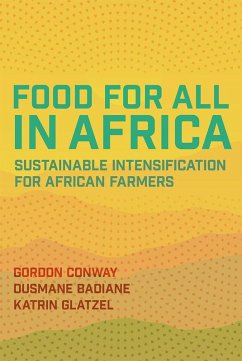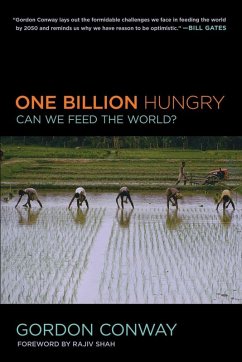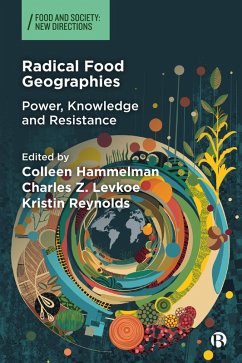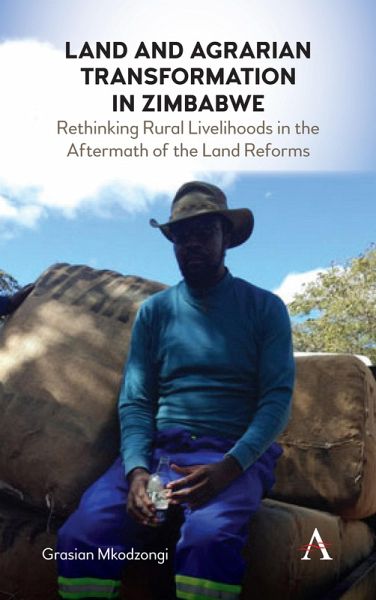
Land and Agrarian Transformation in Zimbabwe (eBook, ePUB)
Rethinking Rural Livelihoods in the Aftermath of the Land Reforms
Versandkostenfrei!
Sofort per Download lieferbar
29,95 €
inkl. MwSt.
Weitere Ausgaben:

PAYBACK Punkte
15 °P sammeln!
This book demonstrates that redistributive land reform can transform the lives of poor peasants by removing distortions in the land ownership structure which allows them access to land and other natural resources which are critical for their social reproduction strategies and livelihood security. Furthermore, it shows that the benefits of land reform go beyond gaining access to land in order to farm; off-farm activities such as artisanal gold mining are a key part of rural livelihoods as they provide capital for further agricultural investments. The fact that a large number of peasants engaged...
This book demonstrates that redistributive land reform can transform the lives of poor peasants by removing distortions in the land ownership structure which allows them access to land and other natural resources which are critical for their social reproduction strategies and livelihood security. Furthermore, it shows that the benefits of land reform go beyond gaining access to land in order to farm; off-farm activities such as artisanal gold mining are a key part of rural livelihoods as they provide capital for further agricultural investments. The fact that a large number of peasants engaged in off-farm activities who utilize income gained from such activities to further agricultural investments demonstrates that off-farm activities are inextricably linked to future agrarian investments.
The book further demonstrates that the land reform was a process underpinned by many dynamics which were often localized in character. This means that any analysis of its outcomes must take into account this diversity of experiences. Overall, important lessons can be drawn from the Mhondoro Ngezi case study presented in this book. First, land reform can address historical injustices in the land ownership structure by allowing landless peasants to access land and other natural resources formerly enclosed under the previous agrarian structure. However, the process is not without challenges; a large-scale resettlement of people requires the provision of social infrastructure and other support such as farming inputs. Without such support, it is difficult for land beneficiaries to quickly make investments on their land. Second, and this is linked to the first point, the benefits of land reform are long term; their impact is likely to take longer to realise. Third, redistributive land reform has the potential to radicalize poor peasants, to demand their rights and entitlements to land and natural resources previously enclosed under an unjust land ownership structure and socio-economic relations. Fourth, a radical transformation of property rights in favour of peasants, such as the one undertaken in Zimbabwe, is likely to attract an international backlash from global capital as it is seen as a direct challenge to the neo-liberal regime of property rights.
The book further demonstrates that the land reform was a process underpinned by many dynamics which were often localized in character. This means that any analysis of its outcomes must take into account this diversity of experiences. Overall, important lessons can be drawn from the Mhondoro Ngezi case study presented in this book. First, land reform can address historical injustices in the land ownership structure by allowing landless peasants to access land and other natural resources formerly enclosed under the previous agrarian structure. However, the process is not without challenges; a large-scale resettlement of people requires the provision of social infrastructure and other support such as farming inputs. Without such support, it is difficult for land beneficiaries to quickly make investments on their land. Second, and this is linked to the first point, the benefits of land reform are long term; their impact is likely to take longer to realise. Third, redistributive land reform has the potential to radicalize poor peasants, to demand their rights and entitlements to land and natural resources previously enclosed under an unjust land ownership structure and socio-economic relations. Fourth, a radical transformation of property rights in favour of peasants, such as the one undertaken in Zimbabwe, is likely to attract an international backlash from global capital as it is seen as a direct challenge to the neo-liberal regime of property rights.
Dieser Download kann aus rechtlichen Gründen nur mit Rechnungsadresse in A, D ausgeliefert werden.




